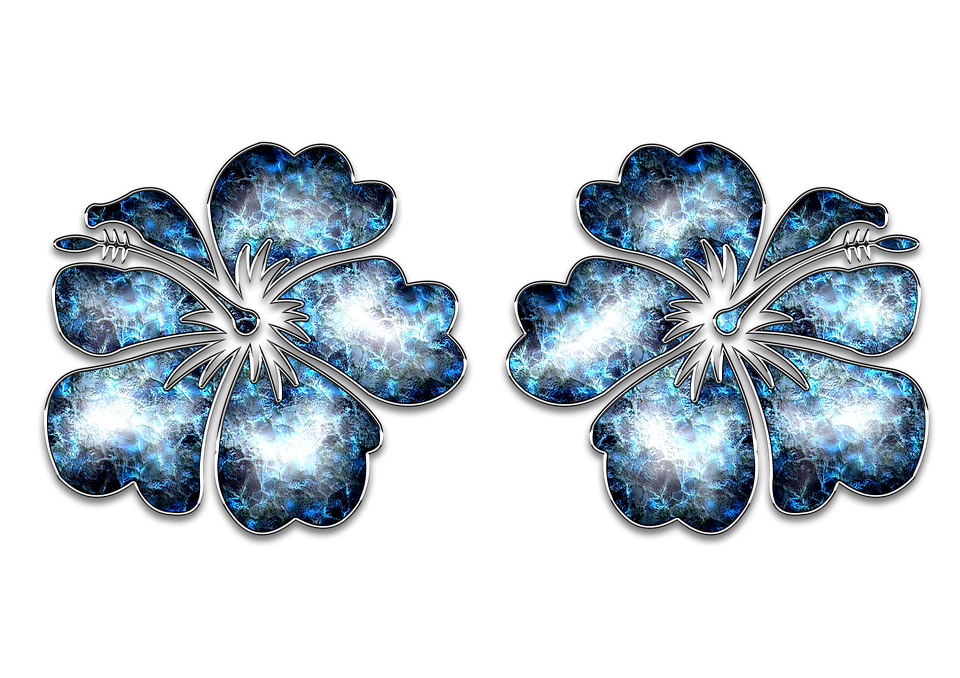
Table of Contents
As Jewelry Shopping Guide editors, we write about things that we love and we think you’ll like too. We often have affiliate partnerships, and may generate some revenue from these links at no cost to you.
Dress and fur clips were major trends that dominated the fashion scenes between the 20s to the early 50s. It was so popular that everyone seemed to be wearing one, from celebrities and actors on screen to the girl next door. It was the accessory to have.
However, in the 50s, dress and fur clips fell out of fashion and never regained the popularity that they initially enjoyed. Today, these vintage clips remain a popular collectible and are worn by vintage fashion lovers.
Let’s take a look at one of the viral trends of the first half of the 20th century and how can sport the look today.
Here’s everything you need to know about dress and fur clips.
What are Fur and Dress Clips?
Although used interchangeably, fur and dress clips are quite different from each other. They’re both clips that were worn on furs and dresses, but have some main differences:
Fur Clips
Fur clips were worn on furs and were designed in such a way as not to damage the fur. The fur clip was typically longer than dress clips and was pinned onto the fur by two sharp swiveling prongs attached to the back of the clip. This is why fur clips are also called double-pronged or pin clips.
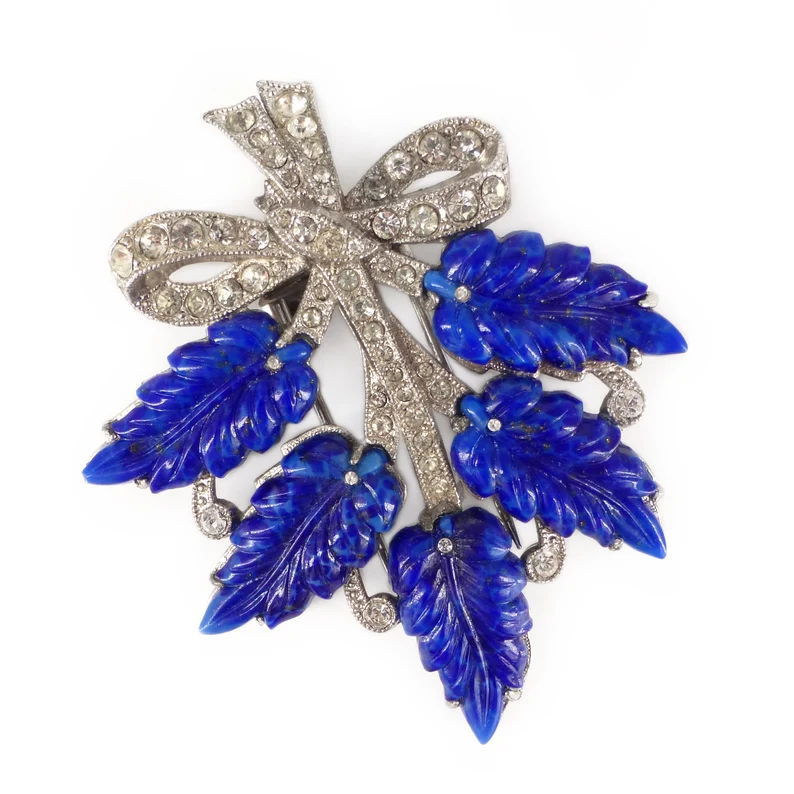
Dress Clip
Dress clips were smaller and more delicate than fur clips. They had different attaching mechanisms, featuring strong hinges or smaller spikes on the underside to hold onto soft, dress material.
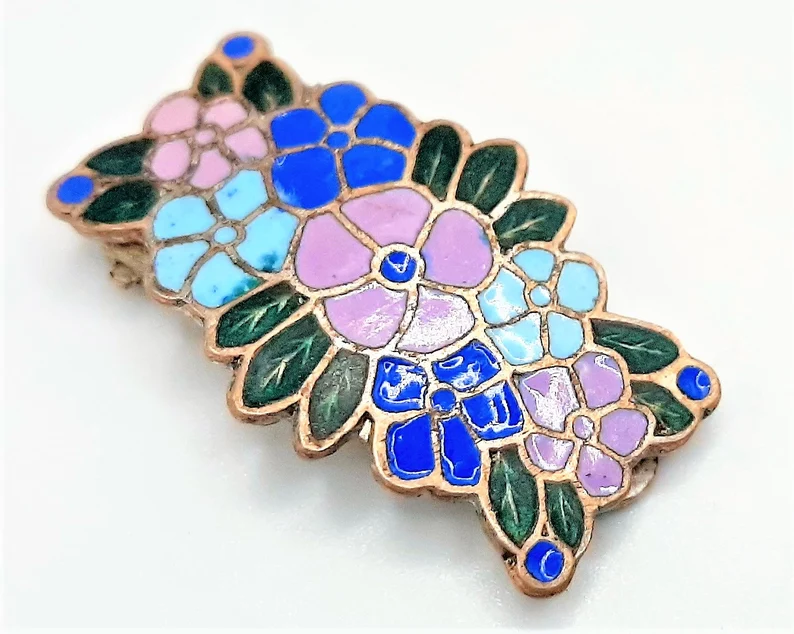
Both dress and fur clips were typically made using inexpensive costume jewelry materials, like rhinestones, faux pearls, lucite ‘gemstones’, and plated base metals. Expensive fine jewelry dress clips were also made by fashion brands such as Cartier, which typically featured precious metals and gemstones.
Dress and Fur Clips vs. Brooches – What’s the Difference?
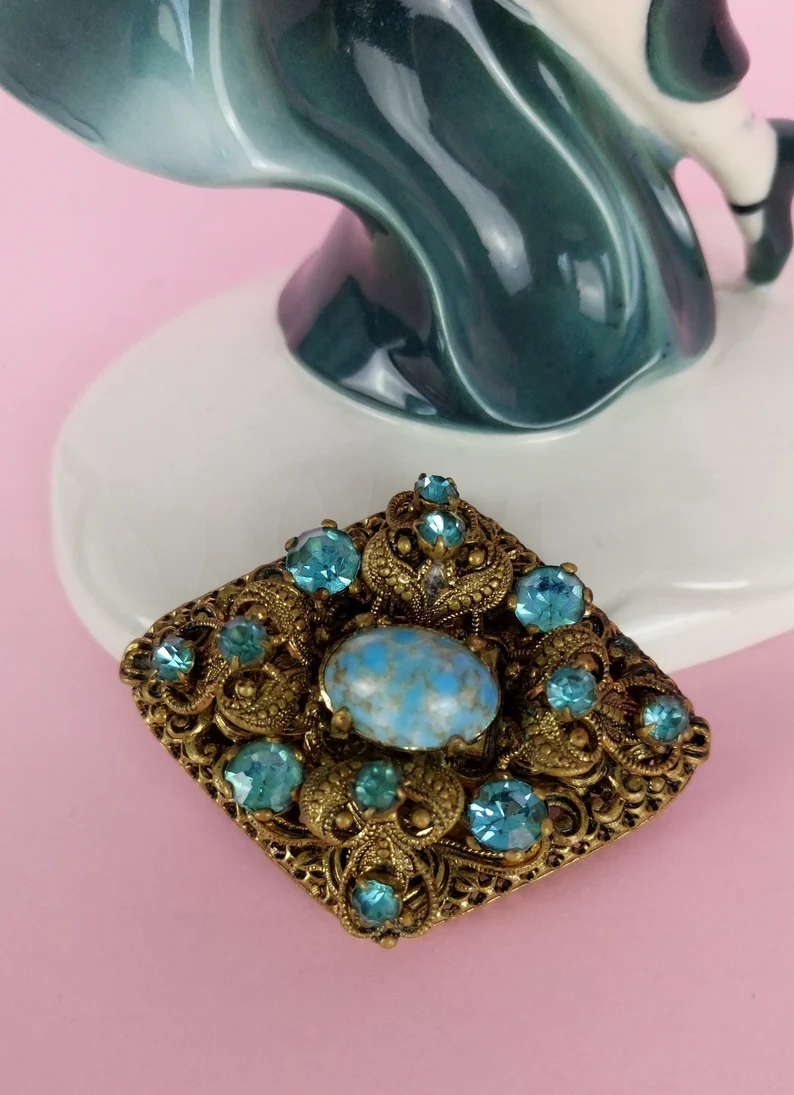
Brooches have always been (and still remain) a popular type of accessory, whereas the dress and fur clip came and went. What’s the difference between these two types of accessories?
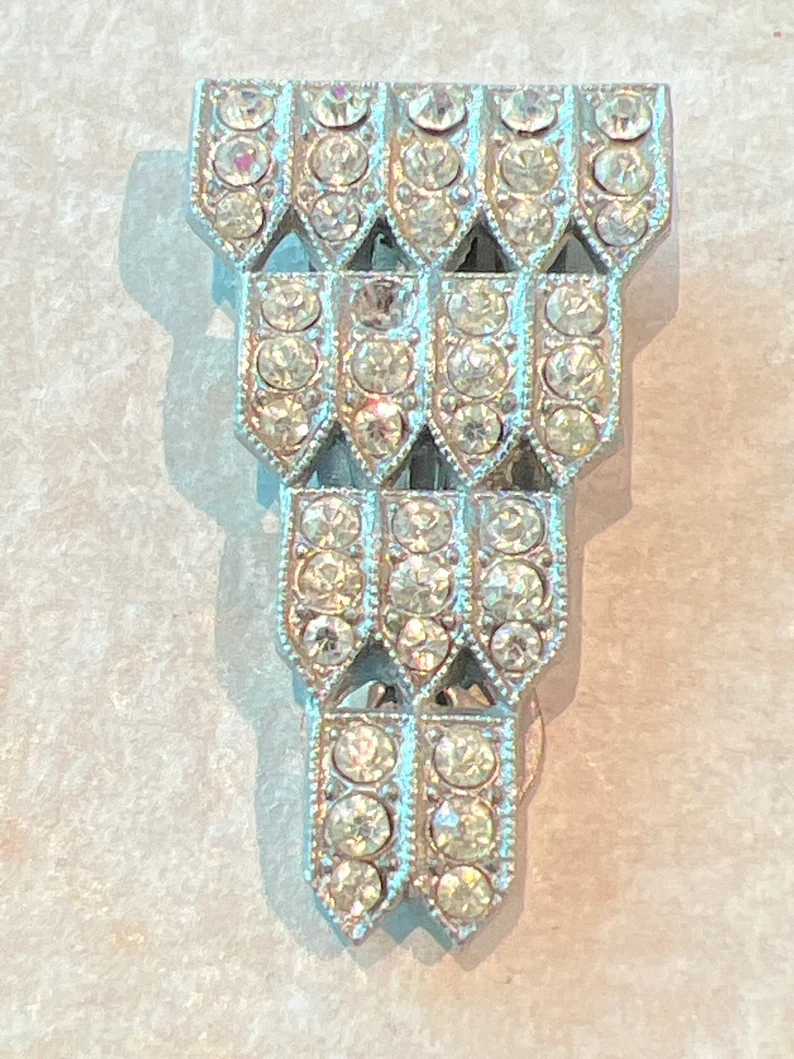
Unlike brooches, initial dress clips were designed as two separate pieces that could be joined together to form a single symmetrical clip. This made them highly versatile, as the pieces could be worn separately as dress clips, together like a brooch, or sometimes even as pendants. A brooch, on the other hand, is always a single piece and has only one function.
Having said that, you’ll also find dress clips that only come as two separate pieces, which can’t be joined together.
Dress and fur clips emerged during the 1920s and have a much shorter history than brooches, which date back to Ancient Egypt.
History of Fur and Dress Clips
Before the advent of costume jewelry fur clips, brooches and pins were worn by the upper wealthier classes to denote status and position. These pieces were typically made using expensive materials like diamonds, gemstones, platinum, and gold.
However, during the 1920s, costume jewelry began to surge in popularity as women turned towards more affordable, intricate, and artistic accessories. New types of jewelry evolved from traditional styles and fur and dress clips were some of them.
Fur and dress clips quickly became some of the hottest trends of the 1930s and everyone, from high-end fashion brands like Coco Chanel and Cartier to affordable costume jewelry companies like Monet and Trifari, was bringing out their own versions.
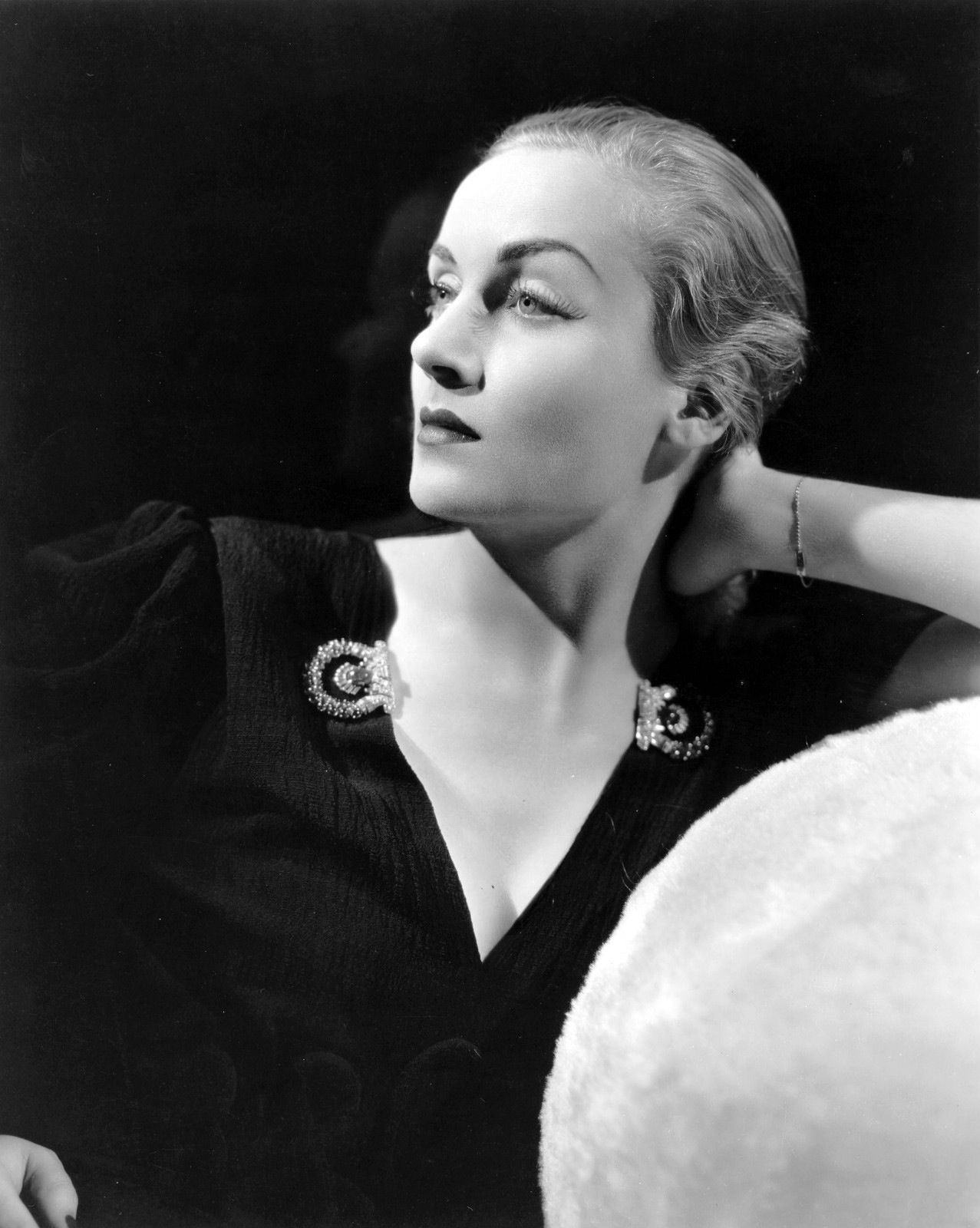
Famous celebrities of the time, like Marlene Dietrich and Greta Garbo, were pictured wearing dresses and fur clips, which added to the allure of the trend and inspired people to follow suit.
With the end of World War II, fashion trends changed again. Brooches became popular again and dresses and fur clips slowly began to slip out of style. After the 50s, these clips never regained their former popularity.
Today dress and fur clips remain a quintessential trend of the 20s, 30s, and 40s and are very firmly placed in that era. However, of late, there’s been a shift and dress clips have made a comeback, although very small.
Types of Dress and Fur Clips
The double dress clip was an invention of designer Louis Cartier who patented this style in the late 1920s. The style was then adopted by all major fashion houses, with each putting their own spin on it. As a result, there’s a wide range of dress and fur clip types to choose from.
If you’re looking for a vintage dress or fur clip, here are some types to look out for:
1. Trifari Clips
Clip-Mates were costume jewelry brand Trifari’s take on the dress and fur clip craze. These double clips were versatile and stylish, typically made from silver and gold toned metals, diamantes, and rhinestones. These remain highly collectible today.
2. Coro Clips
Coro created both Art Deco-style dress clips and Duettes in the shape of figures. These dress clips were in the shape of twin flowers, animals, insects, and people. They were colorful and bright, made using synthetic and faux materials, and featured excellent workmanship.
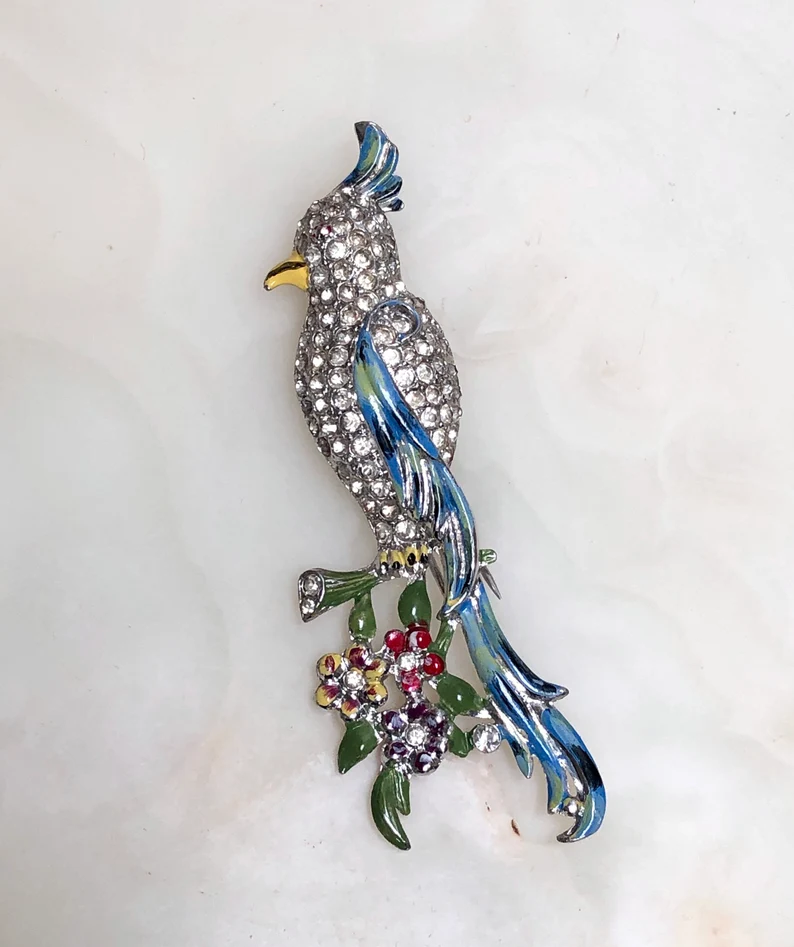
3. Eisenberg Originals Clips
Eisenberg Originals became one of the earliest to create dress and fur clips using crystals to resemble diamonds. They used high-end diamante and silver-toned metals for their line of clips. These were extremely popular and even today, authentic Eisenberg Originals command high prices.
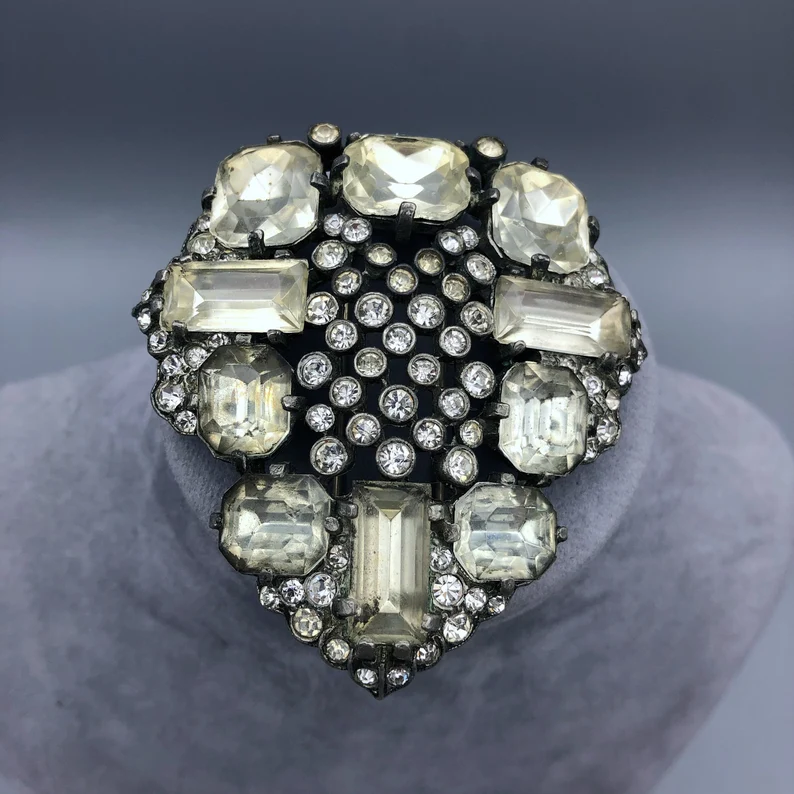
4. Plastic Dress and Fur Clips
Around the early 20th century, Bakelite, Lucite, and other synthetic materials were in vogue and allowed designers to create colorful, inexpensive accessories. Plastic dress and fur clips added a creative and fun vibe to the ensemble.
How to Wear a Dress or Fur Clip Today
Dress and fur clips were worn to glamor up clothes and give them some extra sparkle. A well-chosen dress clip could bring out the beauty of a dress by accentuating its details. Dress clips were attached to scarves to keep them in place, worn on lapels and pockets of jackets, or attached to dresses on either side of a neckline.
Today, dress clips are a beautiful way to add some vintage to your look. Because of how versatile these pieces were, you can change the way you wear them but because today’s casual dress standards make it difficult to wear dress clips as they were meant to be worn, you’ll have to get creative.
Here are some ideas:
- Instead of wearing both clips, wear only one for a more subtle look.
- Dress clips can work as hair clips. Attach to hair for some added sparkle.
- For a casual bling style, attach it to a sweater paired with jeans.
- Pin dress clips onto your shirt collar.
- Wear it with black pants.
- Wear with a chain to make a statement pendant.
Where to Buy Dress and Fur Clips
Dress and fur clips hadn’t been manufactured since the 1950s but today, some designers are bringing the style back. You can find vintage and new revival pieces online generally in good condition and at affordable prices.
We recommend starting your search on Etsy, which has an excellent range of dresses and fur clips. Start browsing to find your perfect vintage or modern revival piece.









